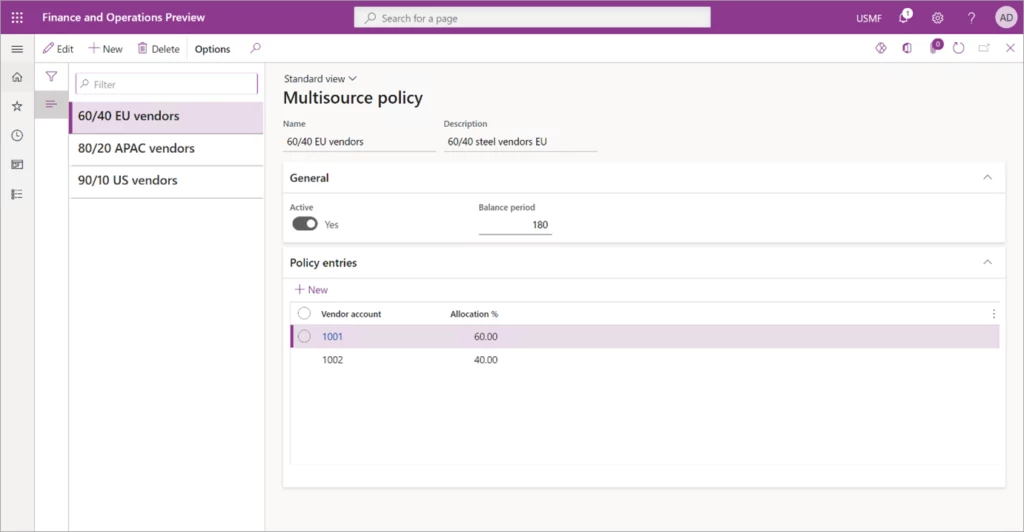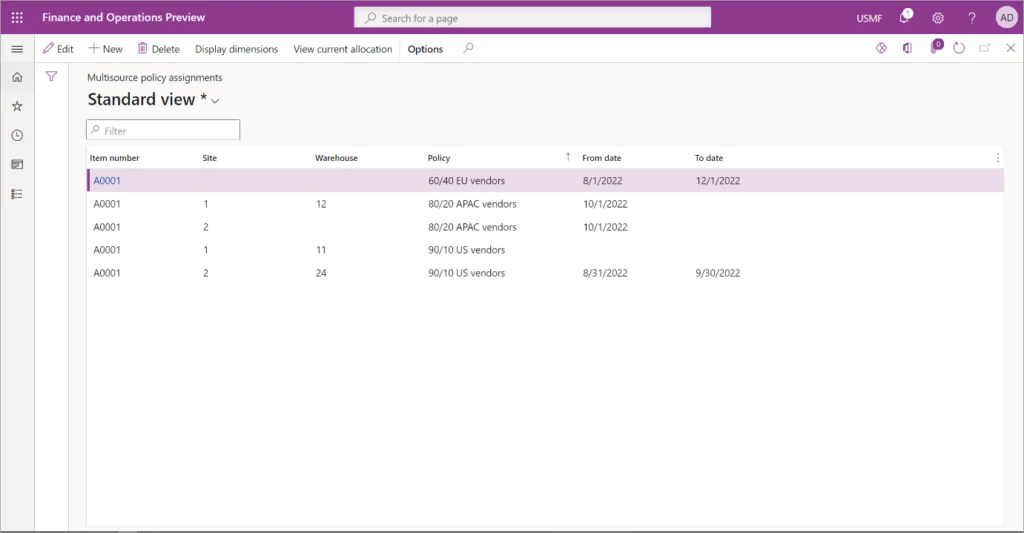
Increase your supply resilience with multisourcing in Supply Chain Management
For many years, companies have based their supply chain strategy on lowering costs and increasing efficiency. Often this resulted in relying on one supplier for important subcomponents, sometimes based offshore where labor is cheaper. During the pandemic, the world discovered that “lower costs and increase efficiency” is not a resilient strategy. A single supplier represents a single point of failure. On the other hand, having a lot of suppliers does not necessarily increase your supply resilience without a good business relationship and communication. The middle ground is to distribute the supply of critical components among a group of vendors, also known as multisourcing.
Of course, multisourcing comes with its own challenges. The new multisourcing functionality in Microsoft Dynamics 365 Supply Chain Management can help you meet them.
Specify multisource policies for supply resilience
Two challenges of multisourcing are how to split the supply of an item across multiple vendors and how to allocate the vendor for a particular purchase order. Both are now easy thanks to the multisourcing features in Supply Chain Management.
First, you can now specify a multisource policy that identifies vendors and sets targeted percentages for each of them. For example, you might want 80% of your supply to come from your main vendor and 20% from a secondary one. Or you might want to distribute orders equally to three different vendors.

You can also specify the period in which the policy applies. Then just assign the policy to a product or set of products.

When Planning Optimization creates a planned order, it chooses the vendor so that the targeted percentages are met over time. In other words, the entire supply is allocated to a vendor, but over time orders are balanced between the vendors in the group.
Some vendors require a minimum order. With the multisourcing feature in Supply Chain Management, you can set minimum order quantities for each vendor and Planning Optimization will respect them.
You can also review the actual percentages kept versus the targeted percentage in the policy to monitor your supply resilience.
Choose the products you should multisource first
The new supply risk assessment workspace makes it easier to find products that are planned to be purchased from a single supplier. These may be good candidates for multisourcing to start increasing your supply resiliency.
The following recommendations can help you achieve higher supply resiliency:
- Multisource products: Split the supply of components among a group of vendors. If you are starting to build this strategy, start with your most critical components.
- Diversify your supply in geography and size: Have both local suppliers with shorter lead times and offshore suppliers with higher lead times.
- Maintain good supplier relationships: Have a good business relationship and communication with your suppliers. When you are able to handle and adapt to disruptions together, you are more agile in fulfilling your customer needs.
- Build long-term partnerships: Your relationship with your suppliers must be sustainable over time and based on trust to be able to handle disruptions over the longer term. High supplier turnover is not beneficial in the long run.
- Assess your supply risk: Evaluate the performance of your suppliers using metrics such as purchase order deliveries as requested, on-time in-full deliveries, on-time deliveries, and in-full deliveries. Dynamics 365 Supply Chain Management makes this easier using the new supply risk assessment workspace.
Learn more
To get started sourcing products and components from multiple vendors, read the documentation: Source products and materials from multiple vendors – Supply Chain Management | Dynamics 365 | Microsoft Learn
To learn how to find products with low vendor resilience, read the product documentation: Supply risk assessment overview – Supply Chain Management | Dynamics 365 | Microsoft Learn
And check out our blog post: Assess supply chain risk more easily in new workspace – Microsoft Dynamics 365 Blog
Not yet a Dynamics 365 Supply Chain Management customer? Take a tour and request a demo.



